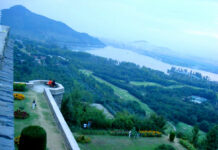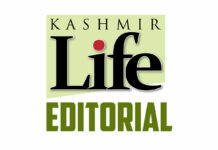Kashmir borders, both the Line of Control (LoC) and the International Border (IB) have turned hugely explosive and terribly deadly. In the first few weeks of 2018, the borders have had more killings than they saw in entire 2017. The renewed tensions have added to the insecurity of tens of thousands of people living near the borders.
When Narendra Modi took over as the Prime Minister, there was a strong belief, even in Kashmir’s separatists, that the Vajpayee doctrine will see some sort of revival. Vajpayee, in his era, did not compromise on anything in the tensions between India and Pakistan but played his policy around two important points: India will have to co-exist with her neighbours and India as a big country in the region has more responsibilities. But when Modi rebuffed his ally Mufti Sayeed in Srinagar publicly, it was more than clear that the Vajpayee doctrine is already a history.
What gradually became a new crisis was the jingoistic attitude in Delhi, both in political spheres and the media. The release of secret footage of events taking place on the border that usually have been routine since 1947, and claims about intrusion into other side as part of the hot pursuit were aimed at strengthening the core narrative that the right-wing parties are keen to take India in its neighbourhood to a level, what others failed in the past. This had reactions on the border and the escalations are still the major news.
Tragically, the policymakers in Delhi gave a go-ahead to the official jingoism but did not give even a thought to what will happen to the people living on the borders. Prior to the Vajpayee initiated ceasefire in 2003, there was a complete system in vogue on the borders that would help the populations survive the shelling, one of the major factors for killings and economic slump because of agriculture failure. There were bunkers and a lifestyle that the people were used to. From various forward areas, they had migrated to safer places. After the ceasefire, all those things changed. The bunkers went into disuse and the people returned home after spending more than a decade as refugees.
In this situation, the people are caught in a renewed crisis. Almost on daily basis, they live a highly unpredictable life. Every time, there is shelling, there are deaths. Most of the houses in almost all the border belts in Jammu-Kathua-Rajouri are in a bad shape because of the shelling.
Amidst the demands of certain safety and welfare measures including new bunker creation, the Jammu-Kathua belt is reacting differently to the situation than the Rajouri-Poonch belt. People in the Jammu region are seeking a one-time conflict so that all issues are sorted out, once for all. Their argument is linked to what they were told during the campaigning by BJP, for whom they voted, both for LokSabha and assembly elections. In comparison, the people in the Pir Panchal Valley are seeking an early resumption of talks with Pakistan so that a pre-Modi situation is restored. Officially, the J&K government is also supportive of the latter stand.
It is now the responsibility of the policymakers in Delhi to take a call. Active borders do not augur well for any state, especially J&K. If the escalations are vital for the next LokSabha, as many people in power corridors think, the populations must be shifted away from the harm first. If it is an aberration, it must be tackled by resuming contact at the reasonably responsible level in Islamabad. J&K cannot afford to destroy yet another season to indecisiveness in strategic policymaking.









